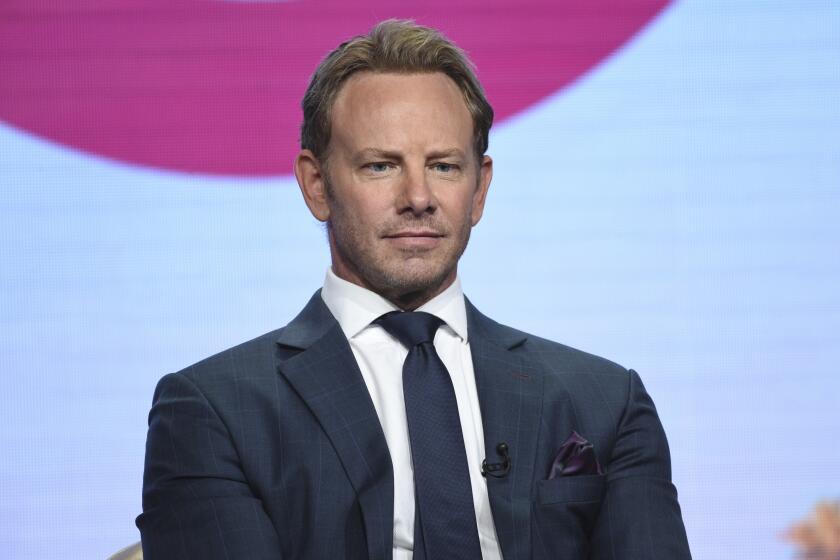Filmmakers Capture War TV Forgot
Grabbing headlines these days is “Schindler’s List,” Steven Spielberg’s critically acclaimed Holocaust movie about a German Catholic businessman who saved more than a thousand Polish Jews from almost certain death at the hands of Hitler’s mass killers.
Nazi horrors of the past are revisited regularly in contemporary arts and literature. Some might argue that if television had been in existence when that genocide began to grow, it may have saved the lives of millions by jumping on the story with a fury and clinging to it tenaciously.
Perhaps not.
*
Question: Why are we seeing less and less on TV about that bloody holocaust in the Balkans?
*
Answer: Sarajevo isn’t sexy anymore.
That’s what Christiane Amanpour, CNN’s reporter there, told People magazine recently, and she was right.
The Balkan conflict is no exception when it comes to TV’s short attention span. Even more than the rest of the media, TV newscasts randomly select agonies to highlight. They’re fireflies that flit from hot spot to hot spot, remaining briefly and then moving on. Inconsistent and sporadic in the best of times, international coverage by the Big Three networks is presently at its lowest point ever.
Their nightly 22-minute newscasts have space only for the tip of the tip of the very tip of the iceberg. And for some years now, the networks have been scaling back domestically and abroad, to the point that foreign news is now largely covered from London, often by someone there reading a script for far-away footage supplied by independent contractors. If not that, a correspondent is “parachuted” in for the traditional quickie.
Television’s most comprehensive global coverage now comes from CNN, the most in-depth from “The MacNeil/Lehrer NewsHour” on PBS.
Ironically, there is more news programming on the air now than ever. Yet local newscasts are increasingly myopic, and the centerpieces of the teetering network news divisions are now magazine series, mostly programs that are predisposed almost exclusively toward stories about consumer fraud and sensational crime and sleaze.
When one of the network news divisions is bequeathed a large chunk of air time for a single issue, the results can be beneficial. ABC News, for example, got an hour of prime time last March for a Peter Jennings primer on the Balkan conflict. But priorities change. Last Wednesday, ABC News used an hour of prime time to have Diane Sawyer present a step-by-step review of the Menendez murder trial.
What to do?
There are no solutions on the horizon. For your personal benefit, though, you might want to call 212-246-0202 and order a somewhat primitive but powerful 53-minute video titled “Sarajevo Ground Zero” from Globalvision Inc.
*
Globalvision is the company that produces the feisty “Rights and Wrongs,” a series about human rights (now on hiatus) that has aired here on KCET-TV Channel 28.
Globalvision executive director Danny Schechter says the major networks have rejected “Sarajevo Ground Zero,” claiming: “We have already done Sarajevo.”
Not this Sarajevo. At least not within memory.
Besides Globalvision, behind “Sarajevo Ground Zero” is a group of Bosnian filmmakers known collectively as SAGA. The video is essentially excerpts from short films they made as the ravaged Bosnian capital continued under bombardment from Serbian guns. Those films have been shown in their entirety at various film festivals, and small segments surfaced on “Rights and Wrongs.”
In the video, this footage is supplemented by interviews with, among others, SAGA head Ademir Kenovic, Pulitzer Prize-winning New York Times correspondent John Burns and U.S. writer Susan Sontag, who staged a production of Beckett’s “Waiting for Godot” in Sarajevo.
It’s the video’s Sarajevo chronicle that is most affecting, though, conveying what it’s like when war is your daily routine. You see here what it means to live under siege, and you see suffering humanized in ways rarely available from TV.
Inhabiting the streets together, in striking, sometimes grisly sights from a film called “Bums and Dogs,” are humans and yelping canines, for example. And when starvation intervenes, “man’s best friend” becomes his meal.
Excerpts of other films include a war-maimed boy rolling a snowball with his remaining hand and a man identified as a captured enemy soldier explaining without emotion how he was trained to slit throats. He also describes how he and three comrades raped a 20-year-old woman.
Even more amazing are scenes with 18-year-old Adisa from “Wedding in Sarajevo.” Surrounded by sobbing, tearful mourners, she is symbolically wed by a clergyman to the corpse of her fiance, a fallen Sarajevo defender. “We got married the day they buried him,” she recalls afterward.
Capped by “Help Bosnia Now,” an emotional singathon reminiscent of “We Are the World,” this collage of miseries is clearly propaganda. Having a definite point of view, the comments and footage are an urgent plea for strong Western intervention to stop the terrible slaughter and mass dying in this region once known as Yugoslavia.
*
That doesn’t mean that “Sarajevo Ground Zero” lies--only that by showing just one side’s anguish, it tells only part of the story. But the slant in no way diminishes the genuine suffering that you do see, suffering that outsiders should be constantly made aware of.
The power of TV pictures is on record. It was such pictures of starving children that pulled U.S. troops into Somalia, and pictures of dead U.S. troops there that stirred cries for withdrawal. Whether the Balkans are added to this “Schindler’s List” remains to be seen.
“This is what war is like,” says Adisa. But, of course, the networks have already done Sarajevo.
The complete guide to home viewing
Get Screen Gab for everything about the TV shows and streaming movies everyone’s talking about.
You may occasionally receive promotional content from the Los Angeles Times.



